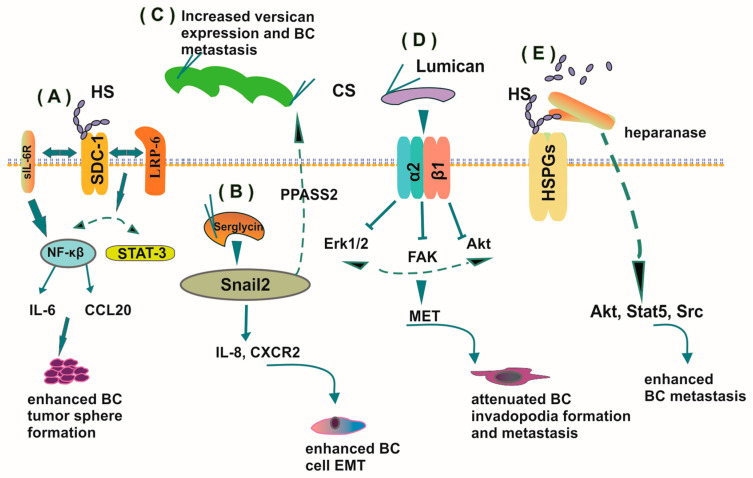Figure 2.
Roles of PGs in hormone-dependent cancer metastasis. (A) Syndecan-1, partly through interactions with sIL-6R and LRP-6, induces NF-κΒ and STAT3 signaling to affect Il-6 expression and CCL20 expression, resulting in BC cell adhesion, tumor sphere formation, and metastasis. (B) Serglycin, through autocrine activation of the IL-8/CXCR2 signaling axis, causes increased expression of mesenchymal markers vimentin, fibronectin, and epithelial-to-mesenchymal transition (EMT)-related transcription factor Snail2, which results in enhanced EMT of BC cells. (C) Snail enhances the expressions of both the versican gene and the PAPSS2 gene; the latter encodes a sulfation pathway enzyme to promote breast cancer (BC) metastasis and tumor relapse. (D) Lumican enhances the expression of α2 and β1 integrin subunits in aggressive BC cells that attenuate downstream signaling pathways, including FAK, ERK1/2, MAPK 42/44, and Akt, resulting in increased MET and downregulation of metastasis. (E) Heparanase, a heparan sulfate degrading enzyme, enhances Akt, Stat5, and Src signaling to upregulate BC metastasis.

